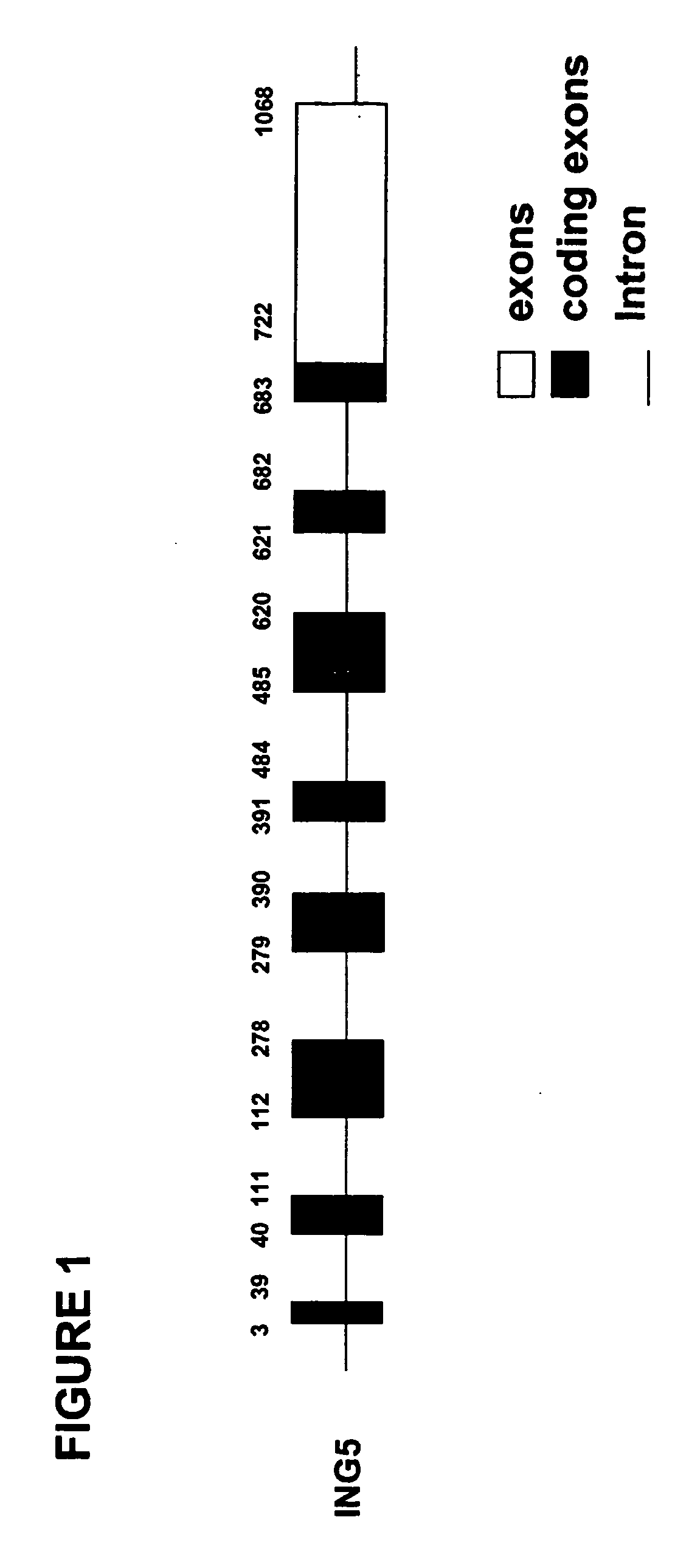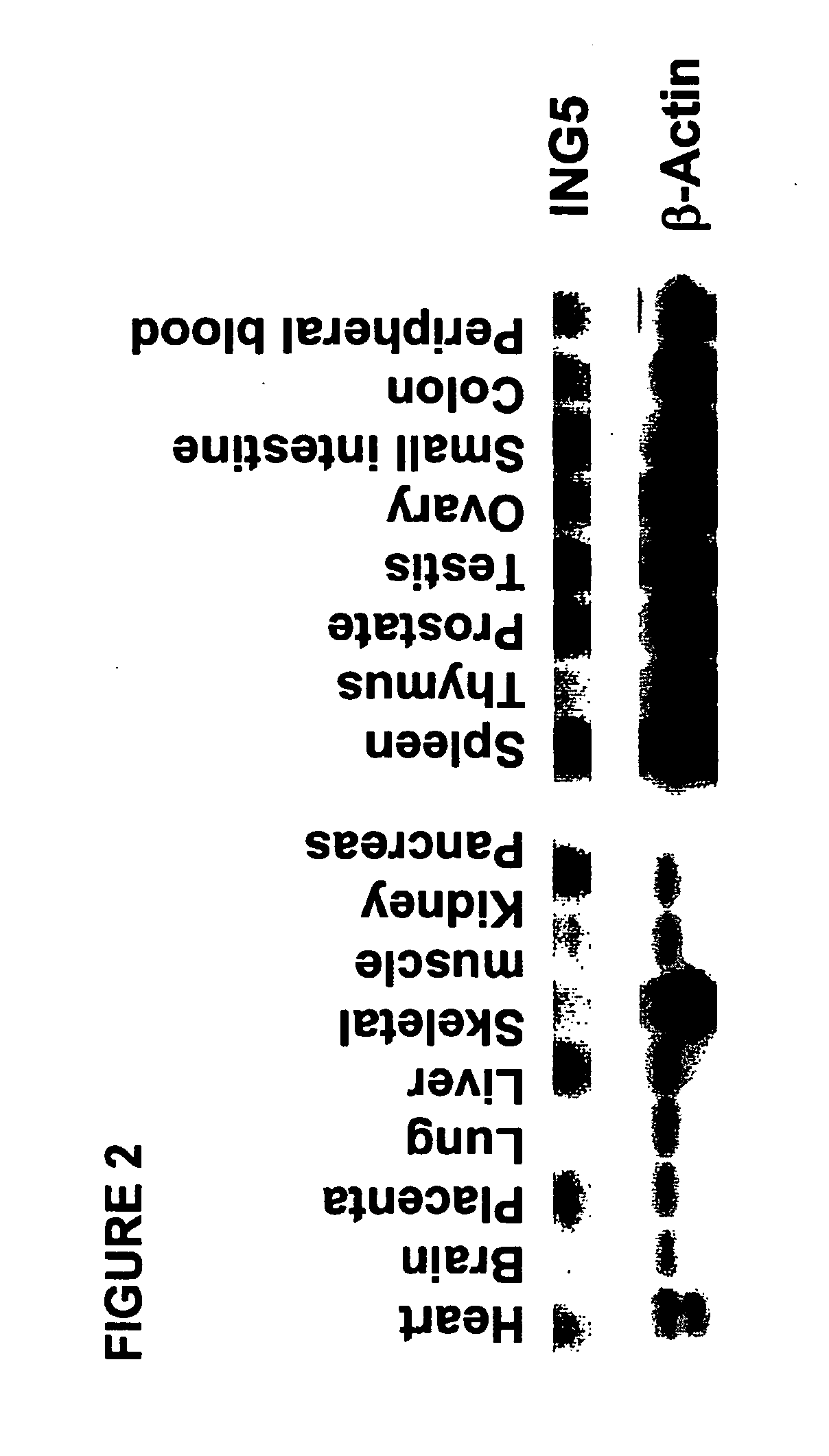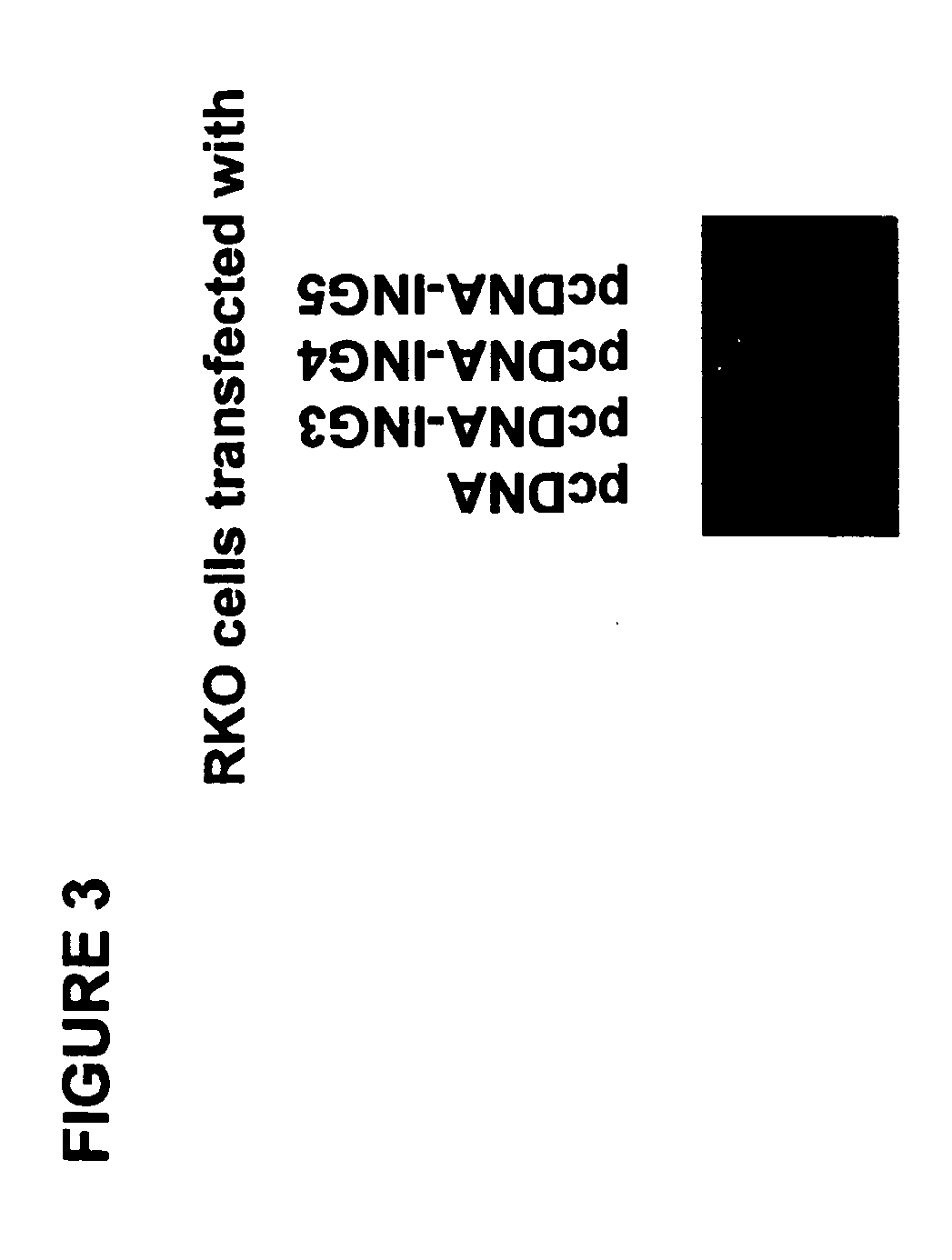Tumor suppressor gene, p28ing5
a tumor suppressor and gene technology, applied in the field of tumor suppressors, can solve the problems that few already identified tumors may not be useful in treating all tumors, and achieve the effects of preventing tumors, reducing tumors, and reducing tumors
- Summary
- Abstract
- Description
- Claims
- Application Information
AI Technical Summary
Benefits of technology
Problems solved by technology
Method used
Image
Examples
example 1
Cloning of p28ING5
[0289] The p28ING5 cDNA (SEQ ID NO: 1; GenBank Accession No. AF 189286) was isolated from human placenta Marathon-Ready cDNA (Clontech) by RT-PCR and ligated into the pcDNA3.1 expression vector (InVitrogen) (pcDNA3.1-ING5). The cDNA was also cloned into the p-FLAG-CMV-2 mammalian expression vector (Sigma) to generate a pFLAG-ING5 construct expressing pFLAG fused to the amino terminal end of p28ING5.
[0290] Human PAC and BAC clone DNA pools were screened by PCR. A human BAC clone (Research Genetics) was found containing the p28ING5 genomic sequence. The clone was amplified in liquid culture, and then purified. The BAC clone was then used to determine the genomic structure of the p28ING5 gene. p28ING5 exons were determined by sequencing and exon-intron boundaries were identified by a long distance sequencer method (Hagiwara and Harris. Nucleic Acids Research, 24; 2460-2461, 1996). Based on the gene sequence it was determined that the p28ING5 gene has 8 exons (FIG. 1...
example 2
Northern Blot Analysis of p28ING5 Gene Expression in Normal Tissues
[0292] Human MTN Blot and human MTN Blot 11 membranes (Clontech), containing approximately 2 μg of normal human polyA+ RNA per lane, were used for Northern Blot analysis. p28ING5 cDNA was used as a probe for Northern blot analysis. Probe labeling was performed using the Prime-It RmT Random Primer Labelling kit (Stratagene) according to the manufacture's instructions. The membrane was hybridized with labeled probe in Hybrizol I (Oncor) containing 50% formaldehyde, 10% dextran sulfate, 1% SDS, and blocking agents. Hybridization was carried out at 45° C. for 16 hours. The membranes were washed with 0.1% SDS and 0.1×SSC, for 20 minutes at room temperature, and then washed with 0.1% SDS and 0.1×SSC three times at 60° C. for 20 minutes. The membranes were then exposed to autoradiographic film and following a five-day exposure, the films were developed.
[0293] The p28ING5 expression level varied among the different tissues...
example 3
Antibodies to p28ING5
[0294] Rabbit polyclonal antibodies against p28ING5 were raised against chemically synthesized, KLH-conjugated peptides SPDQRVERL (residues 57-65 in SEQ ID NO: 2; see also FIG. 12). The antisera from the immunized rabbits were affinity-purified with the respective peptide coupled to SulfoLink (Pierce). After titration by ELISA, the antisera were tested for specificity.
[0295] Sub-confluent cultures of RKO cells transfected with either pcDNA3.1-ING3, pcDNA3.1-ING4, pcDNA3.1-ING5 or pcDNA3.1 were harvested and lysed in buffer containing 10 mM Tris-HCl (pH 7.5), 1 mM EDTA, 400 mM NaCl, 10% glycerol, 0.5% NP40, 5 mM NaF, 0.5 mM sodium orthovanadate, 1 mM dithiothreitol, and protease inhibitor cocktail (Roche). Equal amounts of cell lysates (20 μg) were resuspended in 2×Tris-glycine SDS sample buffer, electrophoresed on a 10% SDS-polyacrylamide gel and electrophoretically transferred to Immobilon-P membrane (Millipore). The membrane was then probed with the anti-p28...
PUM
| Property | Measurement | Unit |
|---|---|---|
| Temperature | aaaaa | aaaaa |
| Temperature | aaaaa | aaaaa |
| Fraction | aaaaa | aaaaa |
Abstract
Description
Claims
Application Information
 Login to View More
Login to View More - R&D Engineer
- R&D Manager
- IP Professional
- Industry Leading Data Capabilities
- Powerful AI technology
- Patent DNA Extraction
Browse by: Latest US Patents, China's latest patents, Technical Efficacy Thesaurus, Application Domain, Technology Topic, Popular Technical Reports.
© 2024 PatSnap. All rights reserved.Legal|Privacy policy|Modern Slavery Act Transparency Statement|Sitemap|About US| Contact US: help@patsnap.com










